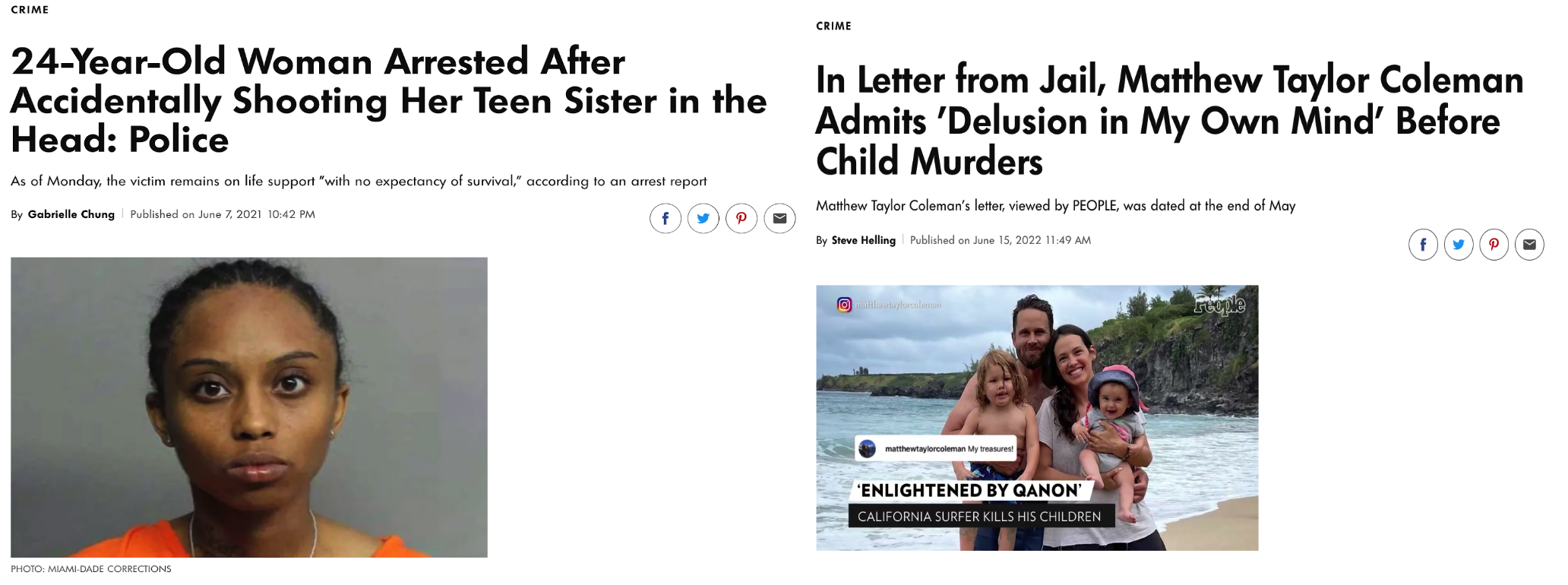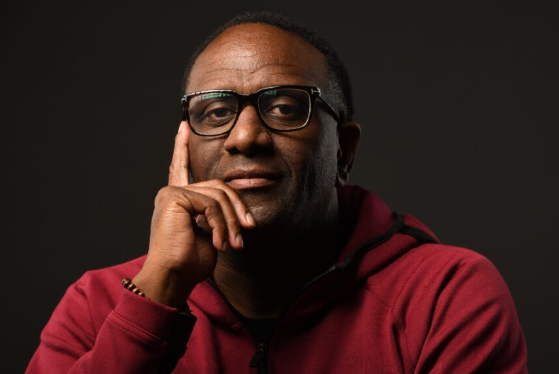(L) Taniyria Holt, 24, was arrested for accidentally shooting her 18-year-old teenage sister in her head. When the teen died from her injuries Holt was charged with manslaughter. (R) Matthew Coleman, 40, was arrested for murdering his two children with a spearfishing gun after he believed that “his wife, Abby Coleman, possessed serpent DNA, and had passed it onto his children and that all things were pointing to the idea that his children have corrupted DNA that will spread if something is not done about it” according to the criminal affidavit. Art by Joseph Sanker.
By Joseph Sanker Staff Reporter
Taniyria Holt accidentally shot her teenage sister in the face while handing her a gun inside a car. Holt’s sister later died due to her injuries and Holt was charged with manslaughter.
Matthew Taylor Coleman murdered his two children due to believing in a QAnon conspiracy theory that his wife and subsequently his children possessed serpent DNA. He believed that his children needed to be murdered in order to stop the DNA from spreading. Coleman was charged with two counts of foreign first-degree murder of United States nationals.
When Holt’s story was reported on, the image of Holt, an African American woman, that was presented to the world was her mugshot from the Miami-Dade correctional facility. When Coleman’s story was reported, the image of Coleman, a white male, that was presented to the world was from Coleman’s personal Instagram portraying Coleman with his wife and children in tow on the beach, smiling. In both instances of reporting, the crime of murder had occurred but the murderers in each story are portrayed differently in the media.
Richard K. Gordon, Professor Emeritus in Teacher Education at California State Dominguez Hills, whose area of expertise includes African-American issues, Multiculturalism, Race and Race Relations, said the different portrayal of races in media is not unusual and is due to the perception of each race.
“Criminality is frequently associated with Blacks, whereas with whites it’s usually something that has to do with the failings of society,” Gordon said.
“Society felt that it was more of a nurture issue [with whites] as with blacks it was more of a nature. So, blacks [are] naturally disposed [to] criminality whereas whites had just happened to be in communities where they needed resources.” Gordon goes on to name times in history where the media followed the idea that it is in the African American nature to be criminal.
“In New Orleans, after [Hurricane] Katrina, they had a white family that went into a grocery store and took some resources and the caption was something like they were doing what they needed to survive.” Gordon said, “Where as they showed a black family coming from a grocery store and they identified them as looters.”
Another example of racial bias in media was during the 1991 case of Rodney King.
“The first words from the newspapers were that he’s a criminal, Why didn’t he just listen? Why didn’t he do what he was supposed to do? Why didn’t he respond to the police officer’s command?” Gordon said, “The fact that he was beaten after a traffic stop [was because] he was perceived as a criminal.”
Gordon also points out that the media does not pay as much attention to crime in rural areas, where more white people are located, in comparison to urban areas, where more African Americans are located. “There was a woman who was running for governor in Oklahoma, just this past election cycle, and during her debate with the current governor she said…we have more crime per capita than New York City and Chicago.” Gordon said. “And she was absolutely correct. Per capita. These cities, these rural cities, have more crime. But the media buys into that narrative that it’s the nature of blacks to be criminals. And where are the blacks? They are in the urban centers, and so we report on those statistics.”



